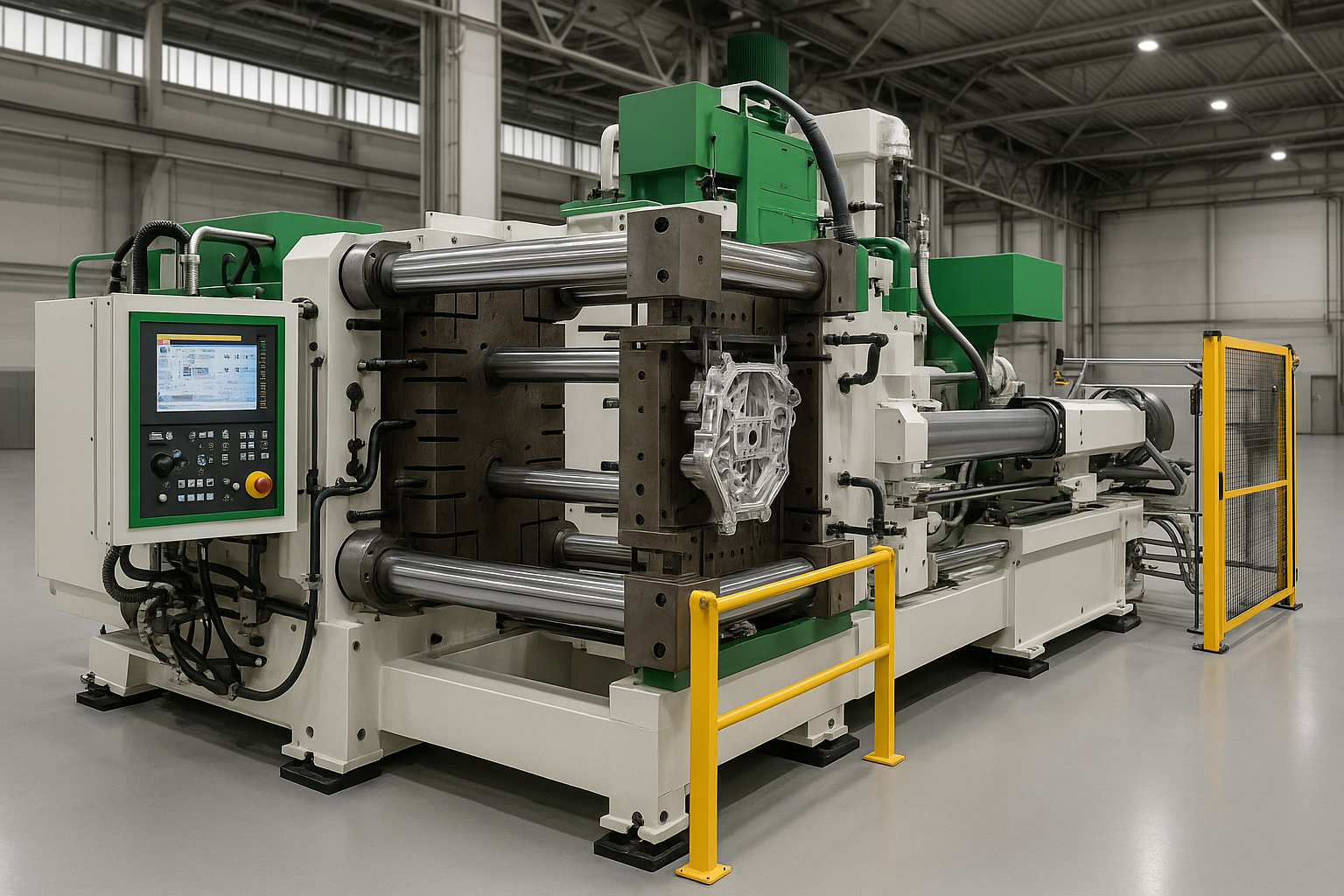In today’s fast-paced car-making industry, accuracy, quick turnarounds, and long-lasting parts are must-haves. High-performance die casting machines are helping factories hit those targets day in and day out. Thanks to these machines, producers can turn out strong, intricate, and surprisingly light components with uniform quality.
Manufacturers, engineers, or anyone along the automotive supply line should know how die casting drives modern vehicle design.
What Is Die Casting?
Die casting is a manufacturing process that pushes molten metal into a specially built steel mold, or die, under very high pressure. Once the metal cools for a split second, it firms up and copies every curve of the mold, so each piece comes out detailed and the same size every time.
There are two main styles.
- Hot-chamber die casting works best with zinc, magnesium, and other low-melting alloys, while
- Cold-chamber die casting handles aluminium and higher-temperature metals.
Why Die Casting Machines Are Crucial for Automotive Parts
Car makers lean on die casting for many key pieces, including transmission housings, engine parts, steering assemblies, brake components, and even electric-vehicle motor cases. All these items must be strong yet light, and die casting hits that target better than most methods. Because it uses less scrap and speeds up large runs, the process also helps meet tight budgets and green goals, two of the automotive world’s highest priorities right now.
Key Features of High-Performance Die Casting Machines
The latest die-casting machines rolling off production lines for the automotive world come packed with tech that moves the needle:
- High-speed injection keeps part accuracy sharp while trimming cycle time.
- Continuous real-time monitoring locks in consistency and drives defects down.
- Energy-smart design cuts both operating bills and a plant’s carbon footprint.
- Fully automated robotics and sensors step in wherever human error could slip.
- Huge clamping force handles even the largest car components without worry.
Together, these innovations let carmakers hit tight schedules while holding quality steady.
Applications in Electric Vehicles (EVs)
As the industry pivots to electric driving, die casting machines are fielding requests for ever-more intricate parts. Now they crank out:
- Sturdy enclosures that shield the EV battery pack.
- Lightweight motor housings that boost range and reduce weight.
- Chassis pieces where strength and low mass matter most.
By consolidating features into single castings, OEMs build vehicles that are lighter, safer, and more efficient.
Choosing the Right Die Casting Machine
Picking a die-casting press for car production starts with a few big questions:
- How much clamping force do you need?
- What metal will you pour-aluminum, zinc, magnesium, or a mix?
- Should the line run semi-automatic or fully automatic, and finally, what cycle time matches your volume target?
Suppliers that back their robust machines with custom upgrades and reliable service often grow into the long-term partners that major automakers trust.
Future Trends in Die Casting for Automotive
Industry 4.0 is rewriting every production floor, and die-casting cells are no exception. Look for:
- Smart sensors that warn crews before failures;
- AI that fine-tunes temperature and pressure in real time;
- 3D printers that build test molds in days instead of months;
- Greener alloys paired with closed-loop coolant chillers.
These advances aim to boost part quality, trim scrap, and help carmakers hit their ambitious carbon goals.
Also Read: What to Know Before Buying a 200 Ton Jasta Die Casting Machine
Conclusion
Reliable, high-speed die-casting presses form the backbone of today’s automotive assembly lines. Their blend of precision, speed, and repeatability makes them essential for the next wave of vehicles, from battery electric SUVs to weight-sensitive components. As the industry presses for lighter, stronger parts, choosing state-of-the-art die-casting technology shifts from optional edge to must-have strategy for staying ahead.




